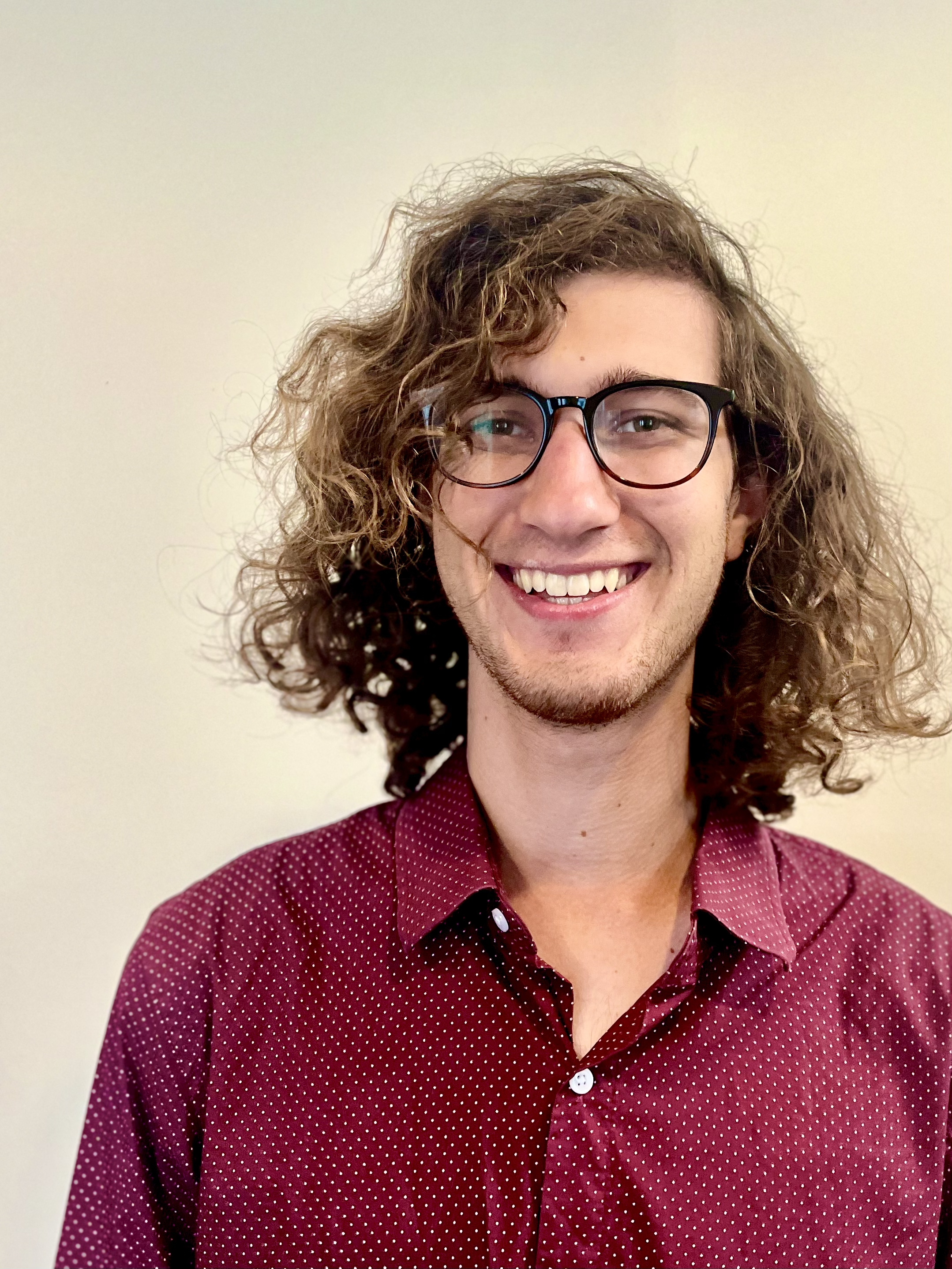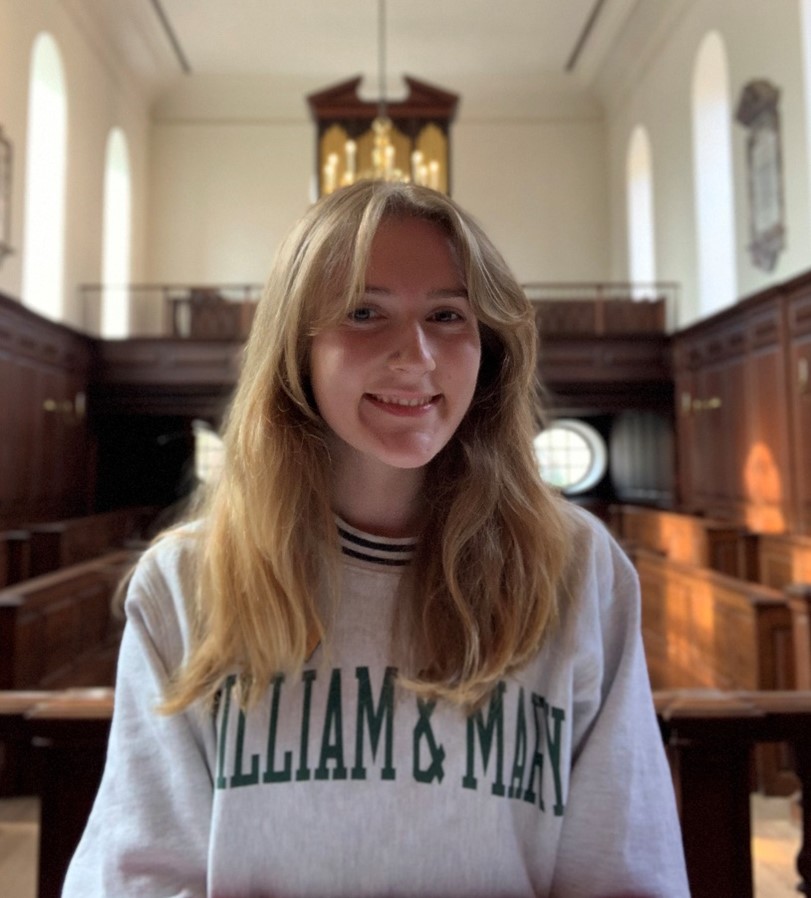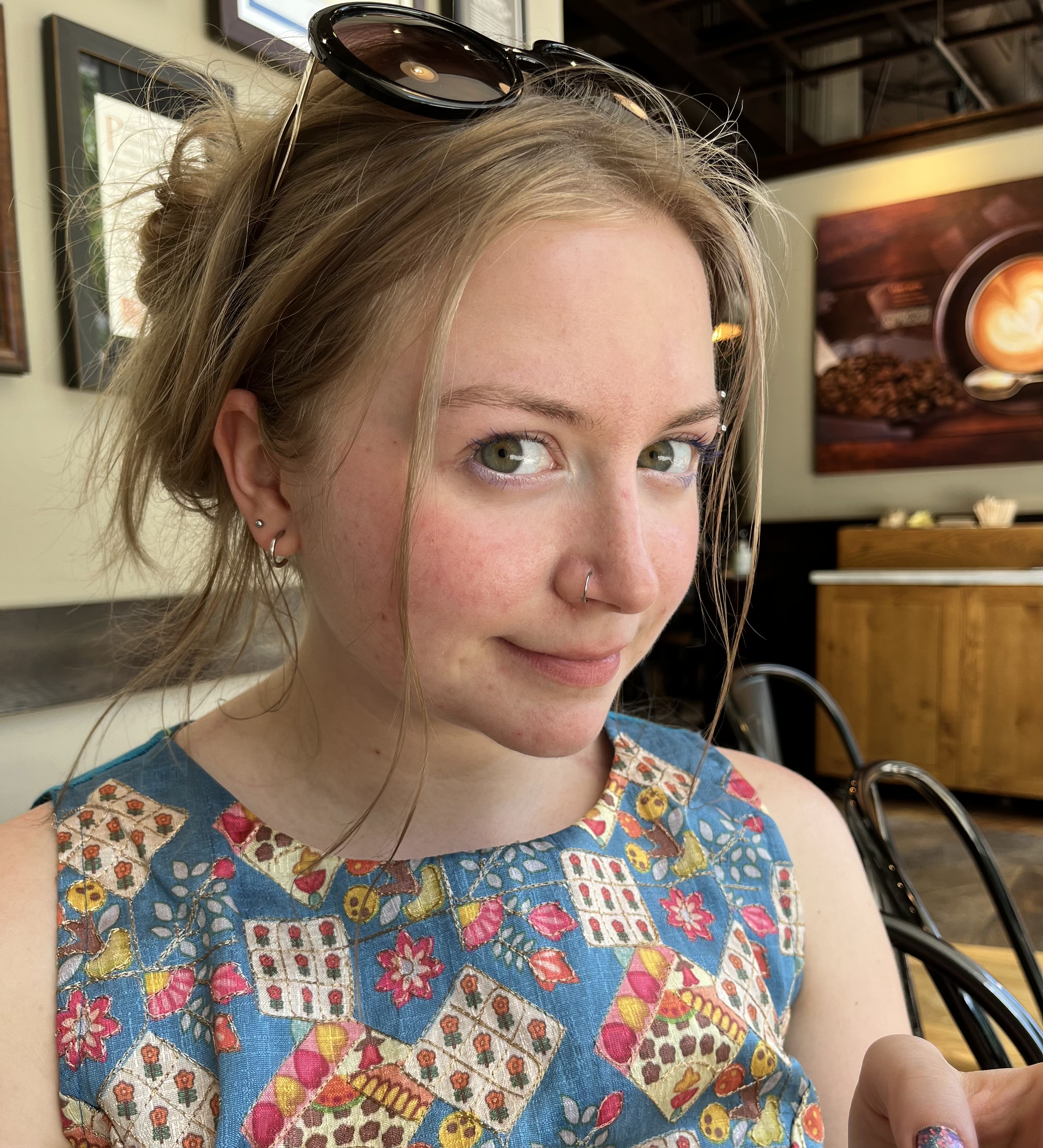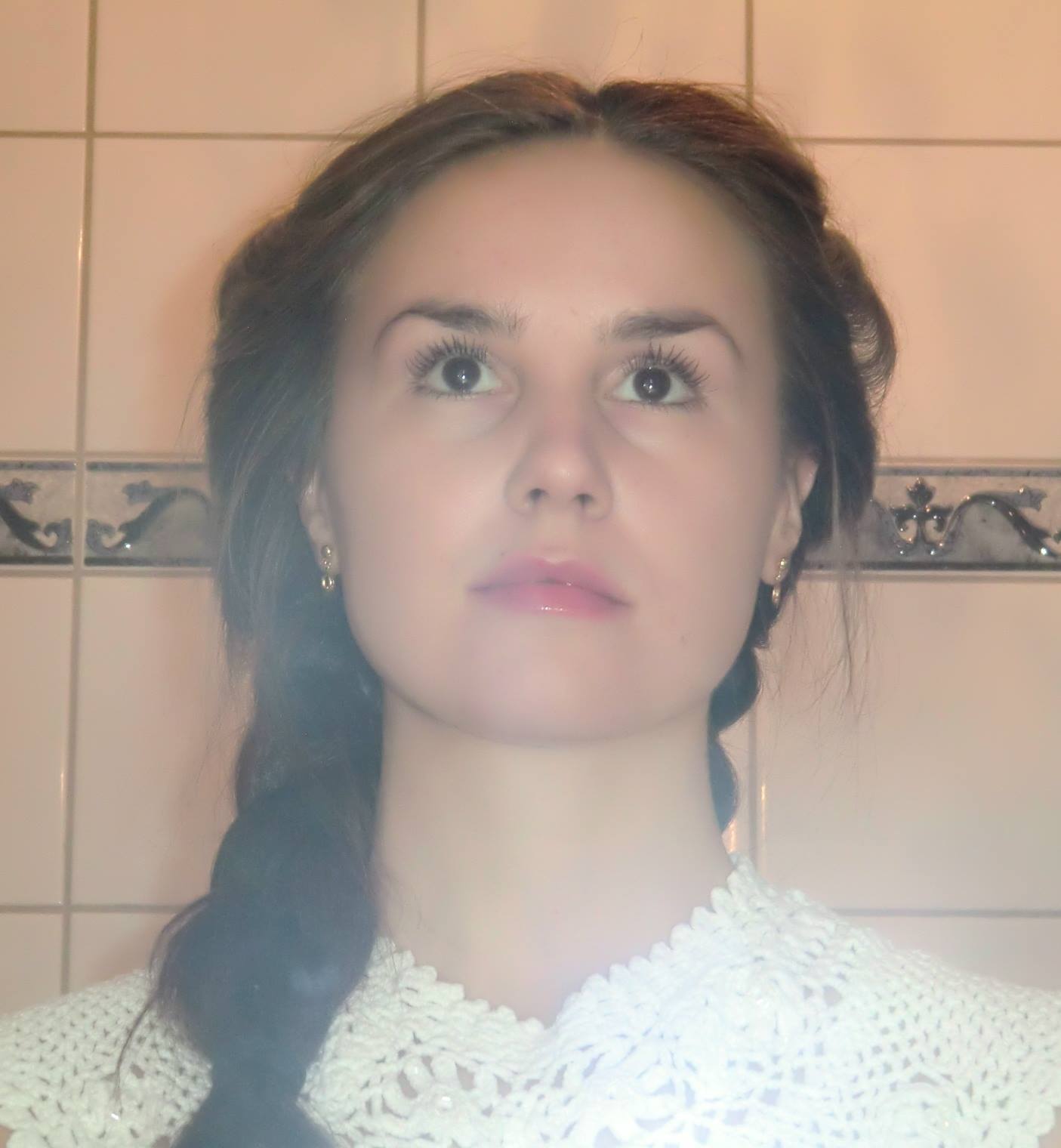RELG 391: Theory and Method in the Study of Religion (COLL 400)
Fall 2022, Prof. Annie Blazer
The religious studies major provides in-depth study of religious traditions, spiritualities, and lived experiences in a variety of historical, cultural, and experiential contexts. Through studying religions, we gain insight into important aspects of social life: gender and sexuality, race, power, art, literature, and media, to name a few. Religious Studies is a uniquely interdisciplinary field, employing theories and methods of disciplines from history, anthropology, sociology, philosophy, and literary studies.
The COLL 400 capstone experience requires students to take initiative in synthesis and critical analysis, to solve problems in an applied and/or academic setting, to create original material or original scholarship, and to communicate effectively with a diversity of audiences. As the capstone of the religious studies major, students in this course had the freedom to apply theories and methods to aspects of the study of religion that most interested them. They created original scholarship that demonstrated critical analysis of an aspect of religion, religious tradition, or the study of religion.
Student Abstracts
|
|
|
Religion and Violence: The Provisional IRA's Relationship with CatholicismJonatha Berg
This paper discusses the relationship between religion and violence, specifically in the case of the Provisional Irish Republican Army’s (PIRA) relationship to the Catholic Church. Despite attempts to discredit the relationship, there is unavoidable political, social, locational, and statistical evidence distinctly linking the two. Both Irish and English scholars have analyzed the details of the Provisional IRA’s relationship to Catholicism and come to similar conclusions, with different emphasis on specific evidence. Brendan Hughes, former PIRA leader, offers a first-hand account into his interactions with Father Reid, a Catholic Priest who visited interned PIRA members during their time in prison. There can be no doubt that the Provisional Irish Republican Army is intrinsically linked to the Catholic Church, as their creation was the response to a silent and violent religious conflict in Northern Ireland. Future researchers should care about this relationship as it provides insight into why violent groups choose to publicly connect with religious practices. It also highlights the untouchable features that religious leaders are granted, in the sense that they are above or equal to the law, which violent groups hope to gain. Religious conflict never ceases to exist but by recognizing that societal response to religion plays a big role in current violent conflicts, we can start to connect the dots sooner and avoid succumbing to the ignorance that leads to violence. |
|
The Sunday Sabbath Movement: The Rise and Fall of a Radical Religious Reform
Daniel Brot
19th and 20th Century Reform Judaism and the radical attempt to change the Jewish Sabbath from Saturday to Sunday. It will undertake that study by examining three case studies: three highly influential temples to the history of American Reform Judaism and the Sunday Sabbath Movement. The last and only three academic papers written on the Sunday Sabbath Movement were published in the 1980s. As such, this paper will be able to draw on a wealth of new Jewish Histories. Those histories will range from general and theoretical to several individual congregational histories. Paired with those histories, this paper will draw on published arguments and sermons over the Sunday Service from 19th and 20th century Newspapers. Ultimately, this paper will argue that leaders who use reforms to embrace the changes beyond their control such as demographic shifts, enabled the Sunday Sabbath Movement's success. Furthermore, the Sunday movement's long prosperity makes it an important chapter of American Jewish History that can not be written of as too Christian or pointless when properly contextualized. This research is significant because explorations of the past can provide lessons for the present. The successes and failures of 19th-century Reforms are important for Religious Leaders and Religious participants to understand as new Reforms seem increasingly necessary in the religious environment of today. |
|
Tarot in the Twenty-First Century: From Unholy Occultism to Holistic HealingBecca Gaylin
|
|
A Reality in the Mabinogion: The Mythology of John RhŷsColin Horn
|
|
“Whom the Wicked in Scorn Call Quakers”: Mary Dyer and the Persecution of Quaker Women in 17th Century New EnglandAoife Hufford
|
|
Hindu Temple Transformation: Changes from Encounters with a Non-Hindu MajorityBenson Kaminski
The following paper is an attempt to study the ways that Hindu sacred spaces change through their interactions with a non-Hindu majority. A comparative analysis is used between the Shri Mangesh Devasthan located in Mardol, Goa, India, and the Sri Siva Vishnu Temple located in Langham, Maryland, U.S.A. Photos taken by myself in addition to those provided online by the temple websites have been included for detailed structural analysis, highlighting both ways that temples have been changed through their interactions with a non-Hindu majority, as well as ways that they have remained identifiable with non-minority temples. I argue that the changes that the aforementioned two temples have undergone have to varying extents altered the natures of the practices within. This research is important because it speaks on a type of change that has impacted multitudes of temples, particularly those constructed in diasporic environments. While the conclusions and statements within should not be generalized to such a large population, they may serve as an early inquiry into the changing nature of Hindu sacred space. |
|
What We Can Learn from Cry Witch! and its Representation of Grace Sherwood?: A Look into the Actual Life and Trial of a Virginia Beach Folk LegendCaroline Leibowitz
The witch trial of Grace Sherwood, a midwife tried by water in 1706 in Virginia Beach, is one of Virginia’s most interesting stories. A reenactment of this case is put on by the Colonial Williamsburg Foundation twice a week to entice visitors, and is called Cry Witch! The play prides itself on the basis of historical evidence and dramatized accuracy. In this paper, I examine the historical accuracy of this production and analyze what its nuances tell us in the broader context of religion and society in Colonial Virginia. Using a historical framework, sources such as 17th and 18th-century court records, and scholarly analyses about Virginian religion and social dynamics, I provide context and answers about Sherwood’s real life. Between a need for women to reproduce, and a government distancing itself from religious concerns, a wide-scale witch hunt wasn’t a possibility in Virginia. The Sherwood trial combines religious social standards and the government's need for stability– agreeing on the idea that women need to be subdued. With limited primary sources available to help write Cry Witch!, it still accurately portrays many of the dynamics that likely would have been present. Where it strays from the truth is at the climax, when the court uses a religious tactic to draw the case to a close. The theatrical needs and entertainment value of Cry Witch! explains this tactic. The current folklore presence of Sherwood is strong but is not based in scholarship. In learning her real story, fears of colonists, motives of leadership, and straying from English tradition are revealed.
|
|
Policing the Sacred: The Implications of Peyote’s Legal Status in the United StatesBritney Price Peyote is a small, button-like cactus which contains the psychoactive substance mescaline, among other alkaloids. This entheogenic plant has been consumed as a sacred substance in Native American rituals for centuries; only recently, however, has the existence of peyote been so urgently threatened. The already dwindling supply of peyote is coupled with recent legislation decriminalizing the plant for non-Indigenous use, thus exacerbating the issue known as the Peyote Crisis. This paper underscores the issues which this Peyote Crisis is posing for members of the Native American Church (NAC) in the U.S. It explores primary sources such as the actual legal documents which first decriminalized peyote for non-Indigenous use as recently as 2019. Additionally, it looks at the primary organizations which have major stakes in this issue: Decriminalize Nature and the Indigenous Peyote Conservation Initiative. Secondary sources include those authored by scholars such as Alexander Dawson, Robin Wall Kimmerer, and others who provide a nuanced perspective on how we might go about respecting Indigenous wisdom and religious practices.Though many are unaware of this issue, I find it imperative to highlight the detrimental impacts which the NAC is facing in their struggle to re-secure their right to the sacrament. |
|
A Revised Account of Miracles in an Age of ScienceTanja Rounds
|
|

















 The collection of eleven Welsh plays known as the Mabinogion first received significant scholarly attention in the late 20th century, as the traditional account of Welsh history was disproven. One of the most significant scholars to study the Mabinogion in that era was the linguist and folklorist John Rhŷs, who sought out traces of Celtic mythology. This paper examines how through his attempts to recreate pre-Christian British mythology through the Mabinogion, John Rhŷs created a mythological system of his own that redefined the meaning of the poems while recreating what was lost with the historization of the traditional account of Welsh history. To that extent, the paper first looks at the histories of the island of Britain—what we believe that history to be now, what it was traditionally believed to be, and what John Rhŷs and the scholars of his time believed it to be—for that history forms the milieu from which the poems were written and in which they were analyzed. Next, John Rhŷs’ work as it applies to the Mabinogion, primarily deriving from his book Lectures on the Origin and Growth of Religion as Illustrated by Celtic Heathendom, is summarized and categorized as to illustrate the mythology he created in his work. Finally, the importance of this work as a mythology will be established and analyzed using lenses provided to us by the work of Mircea Eliade.
The collection of eleven Welsh plays known as the Mabinogion first received significant scholarly attention in the late 20th century, as the traditional account of Welsh history was disproven. One of the most significant scholars to study the Mabinogion in that era was the linguist and folklorist John Rhŷs, who sought out traces of Celtic mythology. This paper examines how through his attempts to recreate pre-Christian British mythology through the Mabinogion, John Rhŷs created a mythological system of his own that redefined the meaning of the poems while recreating what was lost with the historization of the traditional account of Welsh history. To that extent, the paper first looks at the histories of the island of Britain—what we believe that history to be now, what it was traditionally believed to be, and what John Rhŷs and the scholars of his time believed it to be—for that history forms the milieu from which the poems were written and in which they were analyzed. Next, John Rhŷs’ work as it applies to the Mabinogion, primarily deriving from his book Lectures on the Origin and Growth of Religion as Illustrated by Celtic Heathendom, is summarized and categorized as to illustrate the mythology he created in his work. Finally, the importance of this work as a mythology will be established and analyzed using lenses provided to us by the work of Mircea Eliade. This study analyzes the life of Mary Dyer, a Quaker woman executed in Massachusetts Bay colony by Congregationalist Puritans in 1660, to explore the gender and power structures of New England in the seventeenth century. Dyer was a key figure in the Antinomian controversy in the 1630s and Quaker wave in the 1650s, and was a constant target of gendered and theological attacks by male ministerial leaders. Analyzing both her rhetoric and accusations from Puritan leaders, this research argues that Quaker women posed a fundamental challenge to the authority and social structure of congregational New England on account of their sex, ideology, and their use of religion as a means of dissent. Female religious leaders of the 1650s expertly utilized the language and theology of Puritanism to assert their own agency and authority, which so powerfully undermined existing hierarchies that severe persecution and violence was the only route male leaders believed could preserve their status. Drawing on sociological studies of congregational New England and histories of persecution and women in colonial America, this study highlights the power structures upon which American religious and social mores were built, as well as how minority groups found means of dissent within their oppressors' language. Dyer and her female contemporaries exemplify that religion pervades the secular, political, and personal domains of life in America, and that it can be invoked as a means of asserting agency and social change.
This study analyzes the life of Mary Dyer, a Quaker woman executed in Massachusetts Bay colony by Congregationalist Puritans in 1660, to explore the gender and power structures of New England in the seventeenth century. Dyer was a key figure in the Antinomian controversy in the 1630s and Quaker wave in the 1650s, and was a constant target of gendered and theological attacks by male ministerial leaders. Analyzing both her rhetoric and accusations from Puritan leaders, this research argues that Quaker women posed a fundamental challenge to the authority and social structure of congregational New England on account of their sex, ideology, and their use of religion as a means of dissent. Female religious leaders of the 1650s expertly utilized the language and theology of Puritanism to assert their own agency and authority, which so powerfully undermined existing hierarchies that severe persecution and violence was the only route male leaders believed could preserve their status. Drawing on sociological studies of congregational New England and histories of persecution and women in colonial America, this study highlights the power structures upon which American religious and social mores were built, as well as how minority groups found means of dissent within their oppressors' language. Dyer and her female contemporaries exemplify that religion pervades the secular, political, and personal domains of life in America, and that it can be invoked as a means of asserting agency and social change.


 This thesis challenges the prevailing scientific worldview that is antagonistic to the occurrence of miracles. By drawing attention to miraculous healings that are not understood by medical science, this thesis will show that contemporary science does not have answers to every phenomenon that occurs in the natural world. Consequently, this thesis provides a challenge to scientism – the unproven thesis that all occurring phenomena have a scientific explanation. Part I of this thesis establishes that miracles retain socio-cultural value by showing that the belief in miracles has instrumental value for improving patient outcomes in clinical settings. In light of these findings, this thesis will challenge readers to consider the implications of denying the occurrence of miracles in the scientific as well as socio-cultural framework. Finally, Part II addresses the theoretical compatibility of miracles with the scientific worldview of the 21st century. By endorsing a Neo-Thomist reading of the miracle of healing, this thesis establishes that miraculous events participate in the natural order. Consequently, miracles are compossible with the scientific worldview, although they remain incompatible with the ideology of scientism. Part III will consider some objections to this thesis by analyzing the nature of consciousness, and the placebo effect in the context of miracles.
This thesis challenges the prevailing scientific worldview that is antagonistic to the occurrence of miracles. By drawing attention to miraculous healings that are not understood by medical science, this thesis will show that contemporary science does not have answers to every phenomenon that occurs in the natural world. Consequently, this thesis provides a challenge to scientism – the unproven thesis that all occurring phenomena have a scientific explanation. Part I of this thesis establishes that miracles retain socio-cultural value by showing that the belief in miracles has instrumental value for improving patient outcomes in clinical settings. In light of these findings, this thesis will challenge readers to consider the implications of denying the occurrence of miracles in the scientific as well as socio-cultural framework. Finally, Part II addresses the theoretical compatibility of miracles with the scientific worldview of the 21st century. By endorsing a Neo-Thomist reading of the miracle of healing, this thesis establishes that miraculous events participate in the natural order. Consequently, miracles are compossible with the scientific worldview, although they remain incompatible with the ideology of scientism. Part III will consider some objections to this thesis by analyzing the nature of consciousness, and the placebo effect in the context of miracles.